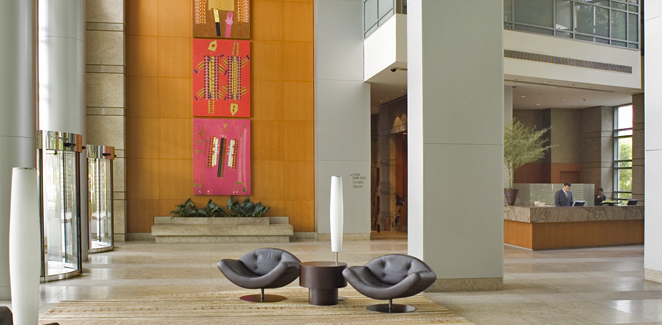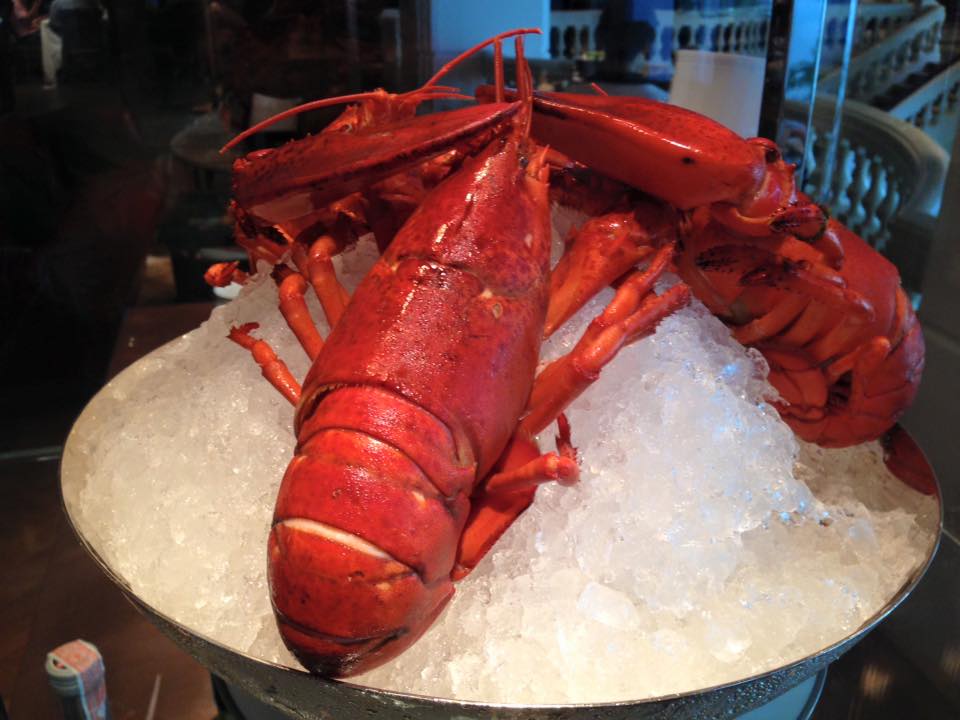
Sao Paulo is home to the largest Japanese population outside Japan and along with the people come the food, the produce and myriad aspects of Japanese cultures.
The district Liberdade in Sao Paulo has been established as a Japanese community “Japantown” since 1950s and authentic, quality Japanese restaurants can be found nearly everywhere in Sao Paulo. The only distinction, it seems, is that due to its tropical “one-season” climate Japanese cuisine in Brazil does not have the abundance of seasonal produce or is restricted by it.
In Sao Paulo I had a chance to try out the modern “kappo” restaurant Kinoshita by Master Tsuyoshi Murakami.
What is “kappo”? “Kappo” – meaning “To Cook/Cut” – is a kind of personal dining where diners are seated, usually at a counter, behind which the chef decides his menu and prepares all the dishes. There is no prep kitchen elsewhere. The “kappo” menu is a hybrid between the keiseki or multi-course tasting haute cuisine and the izakaya or small portioned bar food. The erasure of the barrier between the kitchen and the dining room encourages an intimate and lively exchange between chefs and diners. At Kinoshita I was looked after sous chef Alex who inquired me of my likes and dislikes.
In the end I opted for the “kappo” omakase which comprises of 9 dishes plus one dessert. Alex did most of the choosing. I was still given the liberty of requesting some dishes I fancied from the extensive A La Carte section to replace some of the intended tasting courses. It might be helpful to note that the price ranges approximately between €10 to € 35 per dish for A La Carte dishes. The meal commenced with an aphrodisiac shooter of fresh oysters, salmon roe, marinated nameko mushrooms and quail’s egg yolk. The vibrant freshness of the ingredients was enhanced by the gleaming yuzu-ponzu soy reduction. This was quickly followed by “Kai”, a dish of poached mussels with spicy miso sauce. The bean-y sweetness from the sauce, undercut by the refined pickle acidity from the cucumber ribbons, provided a body to the succulent mussels. I also liked the lingering tinkling sensation from the chilli infusion. Traditional grilled eel Unagi was served with batons of granny smith apple and daikon cress Kaiware. The next dish was medallions of raw flounder and scallop, sandwiched together to create a horizontal stack of multi-textured sashimi – soft texture from flounder and springy from scallop. The construction was toppled with salmon roe and peppery daikon cress and finished with the citric ponzu-yuzu soy reduction. Maguro was prepared seared/tataki style and arrived with spicy miso sauce and quail egg. Like the sauce for the mussel dish, it was tasty; the yolk added unctuousness to it. That said, as a whole, with stringy, minimally roasted spring onions and toasted sesame seeds, the dish tasted rather sweet and undermined the first-rate tuna. The sashimi put the meal back on track. The two cuts of tuna were brilliantly fresh. The garnish of rosemary spring did leave an aromatic scent atypical for sashimi serving in Europe.
Interestingly, the meal gathered its momentum with rice and soy sauce. Alex insisted I try the sushi rice and the soy sauce by themselves, before revealing the care and thoughts that had been put into these creations. Starting with the soy sauce, the kitchen at Kinoshita makes their own soy sauces. This one, in particular, is only served with sushi. It is prepared by a meticulous balancing of kombu, dried bonito, mirin, sake and salt. A pale shade of brown and crystal clear, and after a small sip, it released a calm, rice-y sweetness and a very subtle hint of salt. The soy sauce that accompanied the sashimi prior to this claimed a lot heavier salt content. I moved onto the rice ball presented with a light touch of wasabi. The ball was explosive. The sushi rice here is prepared from the not-so-old, short-grained Japanese rice that are exported to and grown in California. The grains are quite sticky and gel together well. In other words, they do not require much pressure when being turned into a nigiri by the sushi chef, hence the air space between the grains, the lightness and the explosive-ness. To counter the soy sauce, the kitchen seasons the rice with a stronger dose of vinegar – almost reminiscent of rice for chirashi sushi. In this context, they work surprisingly well. The ethereal state of the rice and the pristine taste emboldened the pure flavour from the fish. After the rice came my nigiri platter of tuna, red snapper, mackerel, scallop and seared wagyu beef. Next was an expertly pan-seared wagyu beef fillet, which was described as a migrating piece of beef. That is, a 100% Japanese breed but born and raised in Brazilian clime. It arrived temptingly pink. The taste was on the pure side – not so much aged – and the texture very firm. The duo of Japanese dried chilli flakes and salt did their job well. The parade of savoury dishes concluded with a heart-warming bowl of Kakiage Don. Kakiage refers to a tempura technique of assembling various ingredients to be deep fried together at once. In my bowl there was an assortment of very fresh scallop and prawns with julienne root vegetables, drizzled with the syrupy teriyaki sauce. Sweet but toothsome. The miso boast a clarity of great stock, while the pickled Japanese cucumber tasted more purely compressed rather than with a vinegary tang. The gummy chocolate moji and the white coffee ice cream were such a pleasing way to end my meal.
Yummy experience.
Resto tip “Kinoshita” in Sao Paulo:

Located in the well-heeled residential area of Jardins, and just meters from Ibirapuera Park, São Paulo’s largest green area, the building rises like a gracious ocean liner in dry-dock.
We like this beautiful place but we hardly slept in São Paulo, but not, sadly, because the lure of caipirinhas was keeping me out partying. Rather, the ceaseless hum of rotating blades put an end to my slumbers, Sao Paulo – Brazil’s largest city is also the helicopter capital of the world. There are enough peopled by a super-rich elite reminiscent of The Jetsons who hail choppers like the rest of us would a cab. Brazil’s luxury market grew by 30% and the number of millionaire households in São Paulo is set to triple by 2020.
Prada, Coach and Bottega Veneta have all stores, what makes this all the more remarkable is Brazil’s self-imposed obstacle to the luxury juggernaut: import tax.
Where to stay:
Grand Hyatt Hotel
Unique Hotel
Hotel Unique is ideally located in the heart of Jardins, the most upscale neighbourhood in Sao Paulo, by Ibirapuera Park. Close to both the financial district located on Paulista Avenue & Ave Luis Carlos Berrini, Juscelino Kubistcheck and Faria Lima the most important business districts of Sao Paulo as well as the upscale Jardins´ shopping areas.
Distance: 15 minutes from Congonhas (domestic) and 40 minutes from Guarulhos International Airport.
Shielding dark glass and a desert garden of mini, sand-toned cubes of rock, palms and agaves are the first impressions that the hotel offers. Dramatic high internal spaces such as the lobby are accentuated and illuminated with walls of beige marble, and sharp, geometric themes make the spectacle even grander. A carefully choreographed spectrum of circles and squares, ellipses and sine curves flow in and out of each other, softened by wooden flooring, sleek white furnishings and transparent glass tables and fittings. The rooftop terrace displays amazing views of the city, if you manage to take your eyes off of the fascinating crimson red swimming pool.
I will come back.
Photos: Hotel Unique



